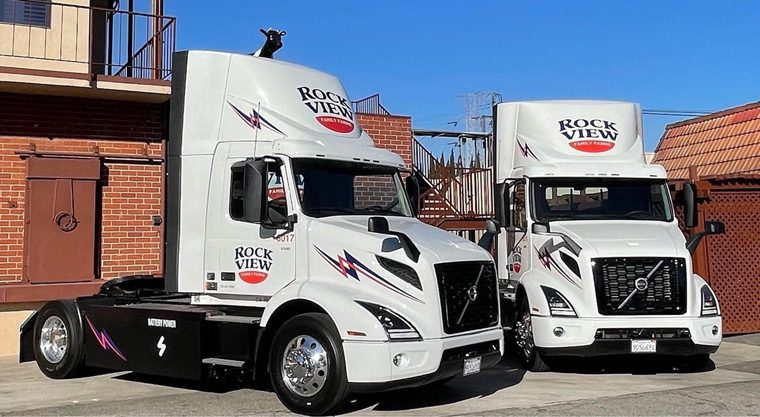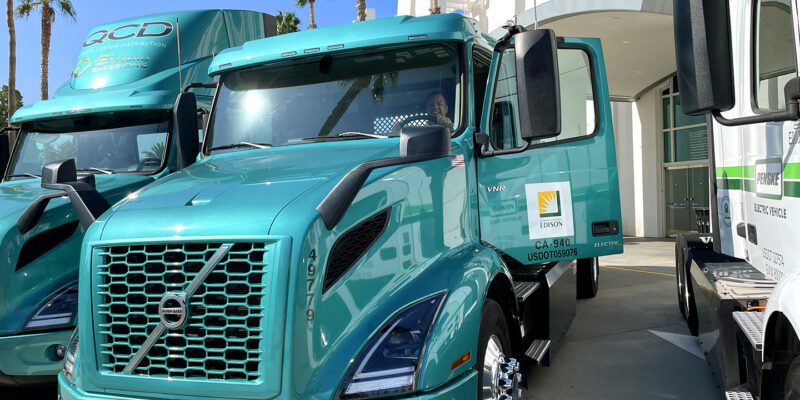News & Media

From ZEV Funding to ZEV Mandates… How California is Building the Market
California has long been a leader in transportation electrification, establishing incentives and policies to help drive market development in state and beyond. Read about some of the recent initiatives that California is pioneering to help transform the way the state moves both goods and people.
Transportation Funding
On January 10, California’s Governor Newsom released a 2020-21 budget that would commit $12 billion over the next five years to help the state meet its 2045 carbon neutrality goals. The five-year “Climate Budget” would aim to protect the environment via: 1) a Climate Resilience bond; 2) ongoing Cap & Trade expenditures to continue the transition to a carbon-neutral economy; and 3) a new Climate Catalyst fund to promote the deployment of new technologies. Key transportation funding measures are included in both the Cap & Trade and Climate Catalyst proposals.
California’s Cap & Trade program has historically funded the majority of the state’s clean transportation technology deployments. The current proposal allocates $400 million in Cap & Trade spending for 2020-21 to reduce emissions in the transportation sector. Key programs would include:
- Clean Trucks, Buses, and Off-Road Freight Equipment: $150 million
- EFMP, School buses, and transportation equity projects: $75 million
- Agricultural diesel engine upgrades and replacements: $50 million
- Clean Vehicle Rebate Program: $125 million
Key transportation funding measures are included in both the Cap & Trade and Climate Catalyst proposals.
As noted by clean transportation stakeholders, this is a reduction from previous years, at a time when demand for available incentives is increasing. However, the Governor’s proposed budget also includes a new $1B Climate Catalyst fund ($250 million in 2020-21, with additional funding in later years). The Climate Catalyst fund would provide low-interest loans for climate-related technologies and infrastructure that are market-ready, but face barriers in the private market. Transportation technologies would be a key focus, including light- and heavy-duty zero-emission vehicles and charging infrastructure, zero-emission transit, advanced technology freight, electric school buses, and electric/hydrogen charging infrastructure.
The Governor also proposed a one-time allocation of $51 million to the California Energy Commission to accelerate deployment of electric vehicle charging infrastructure.
Governor Newsom’s proposed budget continues to support low carbon investments, while also proposing significant funding to combat the state’s wildfire, housing, and other local challenges. Over the next several months, legislators and the governor will negotiate a final state budget, so funding levels and programs could shift by mid-year.
Regulatory Action
These transportation investment conversations in the legislature are happening in tandem with regulatory action at the California Air Resources Board (CARB). Both efforts are part of the state’s holistic “carrot and stick” approach to achieve its carbon neutrality goals. CARB’s proposed Advanced Clean Truck (ACT) Regulation is the first in a suite of regulations to enable a large-scale transition to zero-emissions for the medium and heavy-duty truck market.
As currently written, the ACT rule has two primary requirements:
- Manufacturer
sales requirement: Manufacturers of medium- and heavy-duty vehicles who
sell more than 500 vehicles of 8,5001+ GVWR in California must:
- Report annual sales and vehicle-specific information starting in 2022 (2021 data).
- Produce and sell medium- and heavy-duty ZEVs as a percentage of their annual California sales volume, starting in 2024.
- Large Entity/Large Fleet Reporting: ACT Requires one-time reporting from “large” entities about their vehicles, facility, and contracting operations related to transportation. One-time reports will be due on April 1, 2021 with information on 2020 fleet composition, operations, facilities, and contracting.
These transportation investment conversations in the legislature are happening in tandem with regulatory action at the California Air Resources Board (CARB).
ACT would not require fleets to purchase any ZEVs. However, CARB will use the data from the large entity reporting to develop future a ZEV fleet rule or rules for the 2022 timeframe.
The CARB Board heard public comments about the ACT rule in December 2019 and directed staff to make changes such as identifying sector-specific ZEV targets and modifying the reporting language.
“After extensive comments from communities, environmental organizations, and industry, CARB’s Board directed staff to strengthen the clean truck rule and put more zero-emission delivery, box trucks & big rigs on the road, reaching 100% ZEV sales sooner for several segments. Staff will work intensively with stakeholders to come back with the final version in the spring.”


